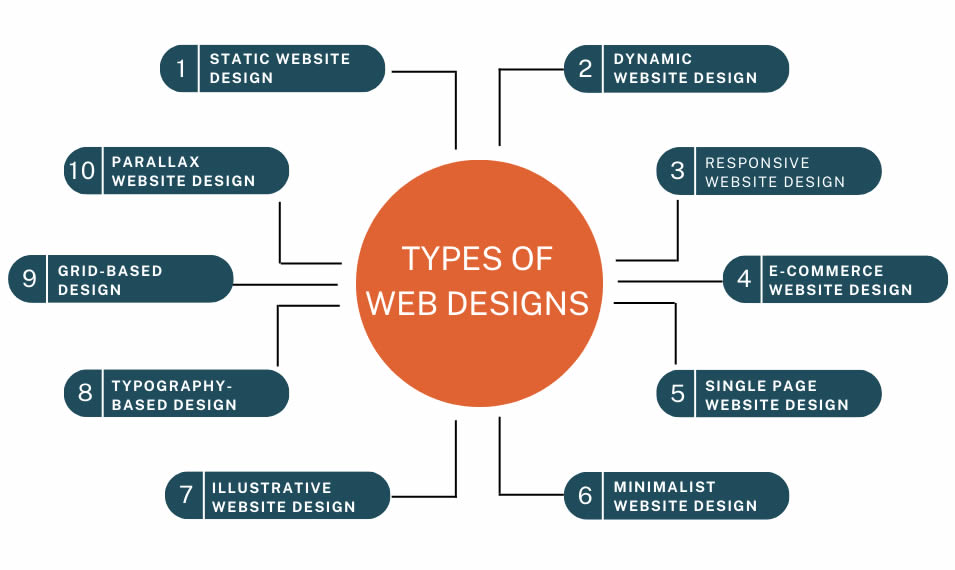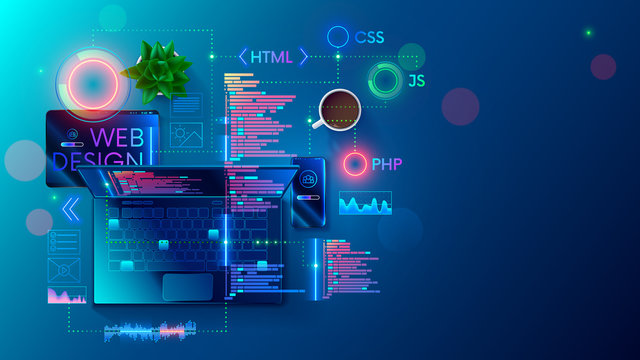Effective Web Design Practices to Optimize Your Site for Conversions
Effective Web Design Practices to Optimize Your Site for Conversions
Blog Article
Elevate Your Online Existence With Stunning Internet Design Tips and Trends
In today's electronic landscape, an engaging online visibility is important for services looking for to distinguish themselves from the competitors. The interaction of visual appeal, existing design patterns, and customer experience plays a pivotal function in accomplishing this objective. By discovering elements such as minimalism, strong typography, and lively color design, you can produce an engaging environment that resonates with visitors. Nevertheless, the subtleties of reliable layout extend beyond looks; recognizing key techniques for optimization can dramatically influence your success. What specific patterns and strategies can boost your internet site to brand-new elevations?
Value of Visual Charm
In today's electronic landscape, the aesthetic charm of a site is critical; studies indicate that 94% of impressions are design-related. This figure highlights the vital function that aesthetics play in user engagement and retention. A properly designed web site not only attracts site visitors however also urges them to discover its web content even more. Effective aesthetic style includes elements such as shade plans, typography, imagery, and layout, all of which contribute to a appealing and natural user experience.
Additionally, a visually attractive internet site imparts a feeling of reliability and professionalism. Individuals are most likely to rely on a website that looks well-structured and polished, which can substantially influence conversion rates. Alternatively, a chaotic or unappealing design can cause high bounce prices, as customers may view the web site as undependable or outdated.
Furthermore, the appearances of a web site can share brand name identity and values. Regular use branding elements, such as logos and color schemes, enhances acknowledgment and fosters a deeper connection with the audience. To conclude, prioritizing visual charm is necessary for developing engaging, reliable, and brand-aligned online experiences that resonate with individuals.
Present Style Patterns
Modern website design is regularly advancing, and remaining upgraded with existing patterns is necessary for developing impactful on-line experiences. One noticeable fad is the surge of minimalism, identified by tidy lines, enough white room, and an emphasis on necessary components. This technique not only improves usability but also allows content to take center stage.
In addition, dark mode interfaces have gained appeal, supplying individuals with an aesthetically striking alternative while decreasing eye strain. This fad straightens well with individual preferences, offering a contemporary aesthetic that is both stylish and practical.

Additionally, the use of micro-interactions-- refined animations that involve individuals-- has come to be important in enhancing customer experience (Web design). These little but impactful components can direct users effortlessly throughout the site
Crucial Style Elements
Reliable web style rests on numerous important layout elements that with each other create a appealing and natural individual experience. The initial of these aspects is design, which determines exactly how web content is organized on the page. A well-structured layout not only improves readability yet likewise overviews individuals via the website perfectly.
Shade plays an essential role in layout, affecting feelings and brand perception - Web design. A harmonious color scheme can evoke particular feelings and develop a visual power structure, consequently accentuating crucial elements. Typography is essential; the selection of typefaces have to straighten with the brand identity and guarantee clarity across devices.
Imagery, including pictures and graphics, includes visual rate of interest and can connect messages rapidly. High-quality pictures appropriate to the web content enhance the general visual and engagement. Furthermore, whitespace is commonly overlooked but is important for producing equilibrium. It helps avoid mess, allowing customers to concentrate on the essential aspects without disturbance.
Lastly, consistency across all layout components reinforces brand identification and makes navigating intuitive. By meticulously including these crucial layout aspects, web designers can develop useful and visually appealing internet sites that astound site visitors and motivate interaction.
Customer Experience Optimization
A smooth user experience is crucial for preserving site visitors and driving conversions on a site. Maximizing individual experience (UX) involves recognizing your target market and tailoring layout aspects to fulfill their requirements efficiently. Trick elements of UX optimization include instinctive navigation, quickly packing times, and clear contact us to activity.
Integrate breadcrumb tracks to aid users quickly backtrack, decreasing aggravation. Speed is an additional critical element; internet sites should pack within three secs to protect against users from abandoning the website.
In addition, your website's layout ought to prioritize quality. Usage legible fonts, contrasting colors, and whitespace to produce an aesthetically enticing format that guides users with web content effortlessly. Phone call to action must be plainly shown, making use of workable language that urges customers to involve.
Mobile Responsiveness Approaches
Nearly half of all web traffic currently stems from mobile phones, underscoring the importance of helpful hints implementing durable mobile responsiveness approaches. To guarantee optimal user experience across various screen sizes, web designers must welcome a liquid grid design that adapts perfectly to different gadgets. This technique allows material to resize and rearrange without jeopardizing performance or looks.
Including versatile images and media questions is crucial. Photos must immediately adjust their dimension according to the viewport, while media questions can find gadget attributes and apply tailored CSS designs appropriately. This technique boosts lots times and makes sure that individuals have a visually enticing experience.
In addition, focus on touch-friendly navigation components. Buttons and web links ought to be easily tappable, with ample spacing to stop misclicks. Preventing hover-dependent interactions better improves usability on touchscreens.
Last but not least, carrying out regular screening across numerous gadgets find and browsers is crucial. Devices like Google's Mobile-Friendly Test can aid determine locations needing renovation. By taking on these mobile responsiveness strategies, organizations can improve user engagement, increase search engine rankings, and ultimately drive conversions, consequently raising their online existence effectively.

Final Thought
In final thought, the implementation of reliable website design strategies substantially enhances on the internet existence. By focusing on visual allure via existing layout trends and essential components, businesses can cultivate reliability and involvement. Maximizing user experience and guaranteeing mobile responsiveness are essential for helping with smooth communication across devices. As the electronic landscape advances, embracing these principles will certainly not just you could try these out captivate visitors however additionally drive conversions, inevitably adding to the general success of online endeavors.

Conversely, a unappealing or cluttered design can lead to high bounce prices, as customers might view the web site as unreliable or out-of-date.
Efficient web design pivots on several crucial design components that with each other produce a engaging and natural individual experience. Maximizing user experience (UX) includes understanding your audience and tailoring design components to satisfy their needs efficiently.
Report this page